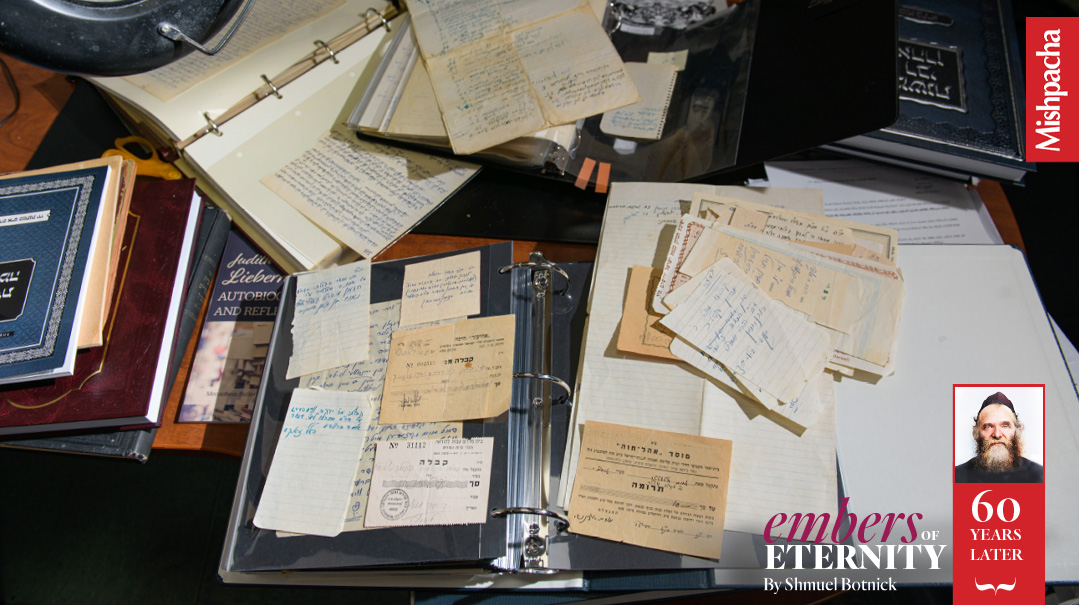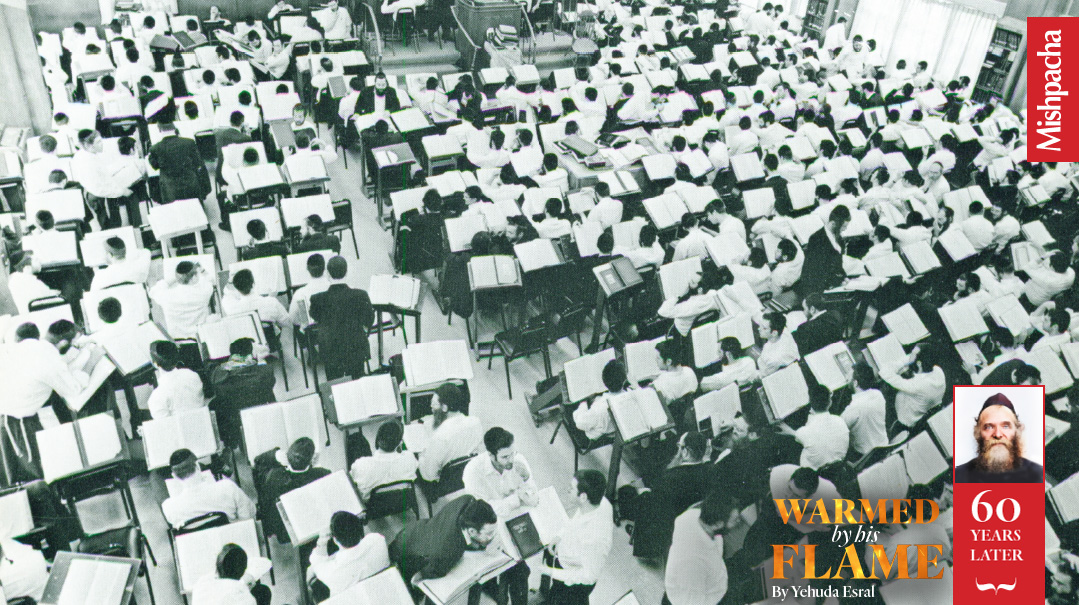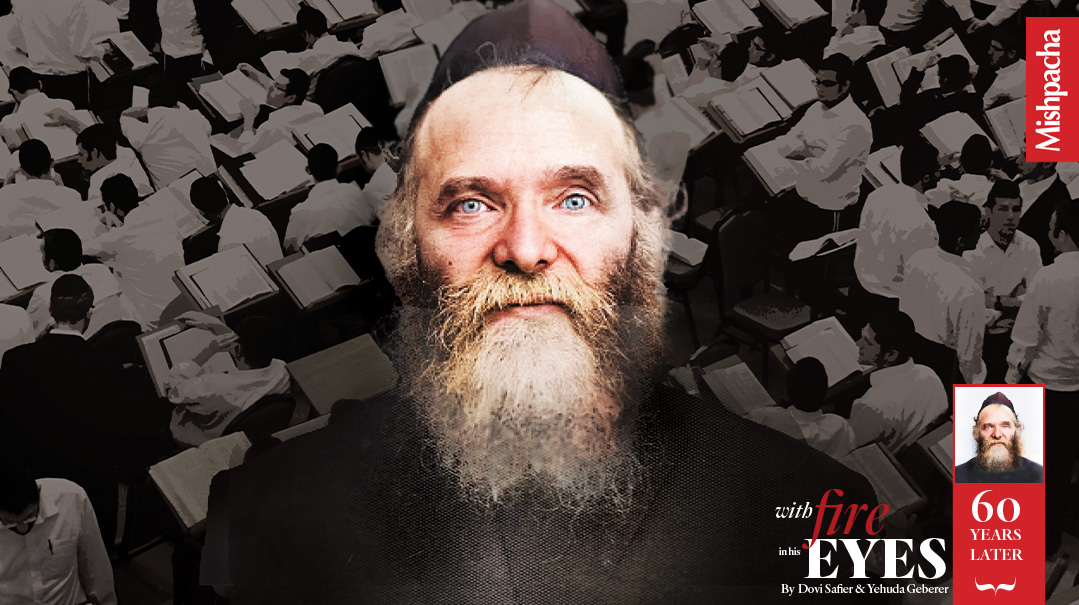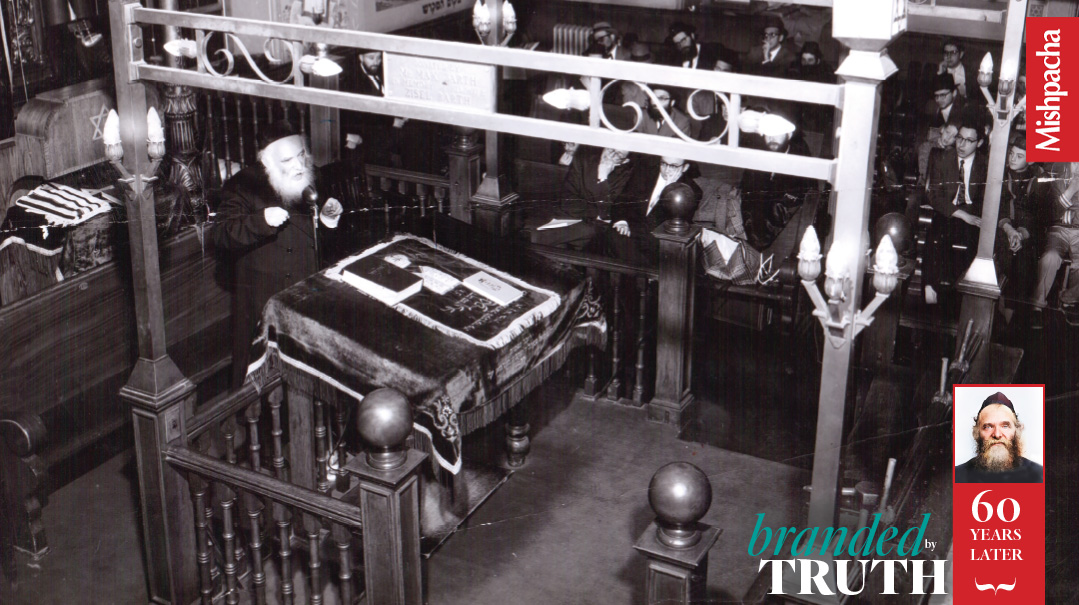Blazing a Path
| December 20, 2022In Lakewood, “Torah iz di beste sechoirah” is not a lullaby to put a child to sleep. Rather, it is the clarion call that brought a revolution to America’s yeshivah world.
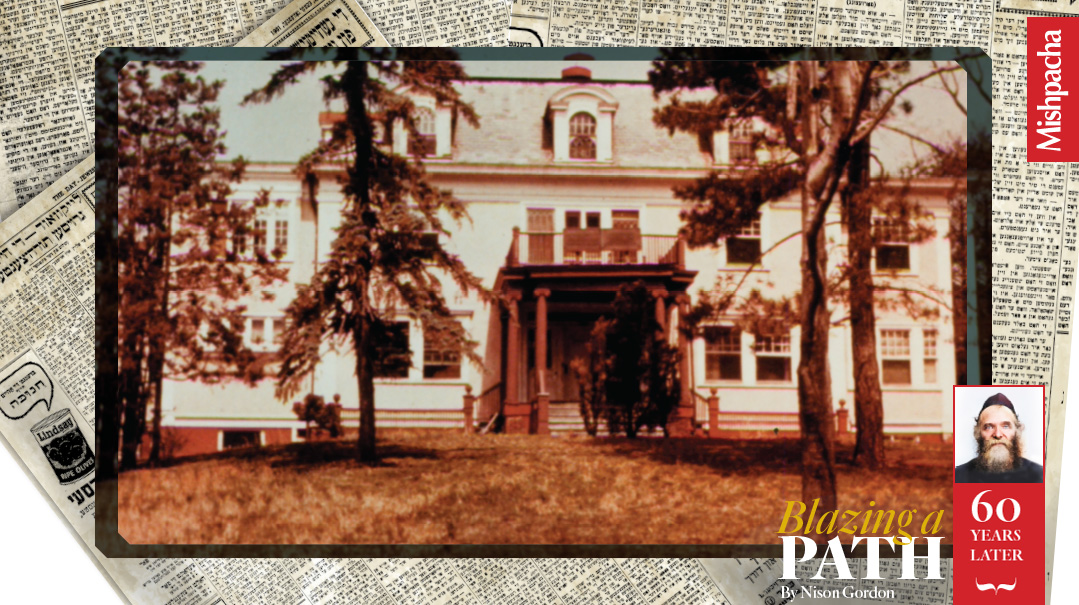
Photos BMG archives and Hoberman Family
Lakewood, New Jersey — winter resort town surrounded by lakes and forests, favored vacation destination of many New York Jews — has had the fortune and privilege to become the successor to a major Torah enterprise that was consumed in the flames of war across the ocean.
The first Jews who settled in Lakewood never dreamed that a time would come when the word “Lakewood” would denote the address of one of the world’s major Torah centers. They could not fathom that besides beautiful hotels, a glimmering lake complete with honking geese, and a forest where deer roam fearlessly, Lakewood would also boast a Beth Medrash Govoha directed by a rosh yeshivah who occupies a front line position among the Torah giants of the generations.
During the course of my research on Rav Aharon, I came across something extraordinary.
Reb Nison Gordon, a faithful Lubavitcher chassid and close confidant of many gedolim, was one of the premier Yiddish journalists of his time. As skilled as he was with a pen, he was even more adept as a defender of Torah Judaism.
He utilized his columns in the Algemeiner Journal, Der Tog-Morgen Journal, and other publications to acquaint his readers with the beauty and majesty of the vital Torah institutions of his time, offering first-hand exposure to a world believed by many to be well on its way to extinction.
In November 1961, he traveled to Lakewood where he discovered a sight for sore eyes. Against all odds, Rav Aharon Kotler had revived and rebuilt a Lithuanian-style Torah fortress in a New Jersey resort town. Reb Nison devoted an article to this development, even suggesting that one day a whole town could spring forth, an “Ir Hatorah.” Apparently he was on to something….
— Dovi Safier
Until 18 years ago, there was no link between the Polish town of Kletzk and the American town of Lakewood. Kletzk was renowned in the yeshivish world. The Slutzker Rosh Yeshivah and Rav, Rav Isser Zalman Meltzer ztz”l, reigned there; he came to Kletzk after the first World War. After Rav Isser Zalman moved to Yerushalayim in 5684/1924, where he became rosh yeshivah of Etz Chaim, his son-in-law, today known as the gaon Rav Aharon Kotler, became the rosh yeshivah of Kletzk. He led the yeshivah until the bitter end, when war broke out in 1939.
Neither of the roshei yeshivah — not Rav Isser Zalman, nor his son-in-law Rav Aharon, standing in Kletzk at the rosh yeshivah’s shtender — had heard that in faraway America there existed a town called Lakewood, just as the Jews of Lakewood had not heard that across the ocean was a village called Kletzk, where the kol Torah resounded day and night.
Today, 18 years later, if you visit Lakewood and chance upon two bochurim walking the streets engrossed in their learning, you know that they are two talmidim of the Kletzker Rosh Yeshivah.
When you hear today that a young couple is moving to Lakewood after their wedding, you know that the young man is going to be learning in Beth Medrash Govoha and will be hearing shiurim from the Kletzker Rosh Yeshivah, and that the young woman will hold a teaching job at the local elementary school or in a Talmud Torah in a nearby town for as long as she can.
Today, when you hear that Rav Velvele Brisker ztz”l, selected a bochur from Lakewood as a chassan for his youngest daughter, it does not mean — with all due respect — a successful young man with a future in the hotel business; this particular chassan is in fact a talmid of the Kletzker Rosh Yeshivah. At the wedding that took place last year in Yerushalayim, word was that the entire enterprise of Lakewood’s yeshivah would have been worthwhile, if only to produce this talmid.
In short, during the past 18 years Lakewood has become one of the capital cities of the Torah world.
Nothing but learning carries importance in Beth Medrash Govoha. Those who come to learn in Lakewood do so because they are overcome by a deep thirst to learn Torah lishmah.
Of course, that phrase can mean many different things. But in Lakewood, learning Torah lishmah means to learn because Torah study is the tachlis — the purpose of one’s entire being. Because being a Jew means learning and delving into Torah.
These who come to learn in Lakewood and to sit at the feet of the Kletzker Rosh Yeshivah, put aside any thoughts of moneymaking and careers. In Lakewood, they do not celebrate graduations, issue diplomas, or even grant rabbinic ordination. Learning for its own sake is the greatest purpose here. Sitting at the Gemara, surrounded by seforim of Rishonim and Acharonim, is the best career.
In Lakewood, “Torah iz di beste sechoirah” is not a lullaby to put a child to sleep. Rather, it is the clarion call that brought a revolution to America’s yeshivah world.
We spend so much time and effort discussing and debating the advantages and disadvantages of Torah and science, Torah and derech eretz — and we temporarily forget that Torah alone, without any frills or additions, also deserves a chance in America.
In Lakewood they don’t constantly consider what people will say. They don’t pay much attention to widespread belief that one needs a college degree in order to leave one’s mark. In Lakewood there is only one criterion, one metric — does it help or hinder a person from growing into a lamdan in the full sense of the word?
Do the math; it’s a simple formula: When a person learns more Torah, he knows more Torah. The less a person involves himself in the world outside, the deeper he can be immersed in his learning, and the deeper the learning penetrates into him.
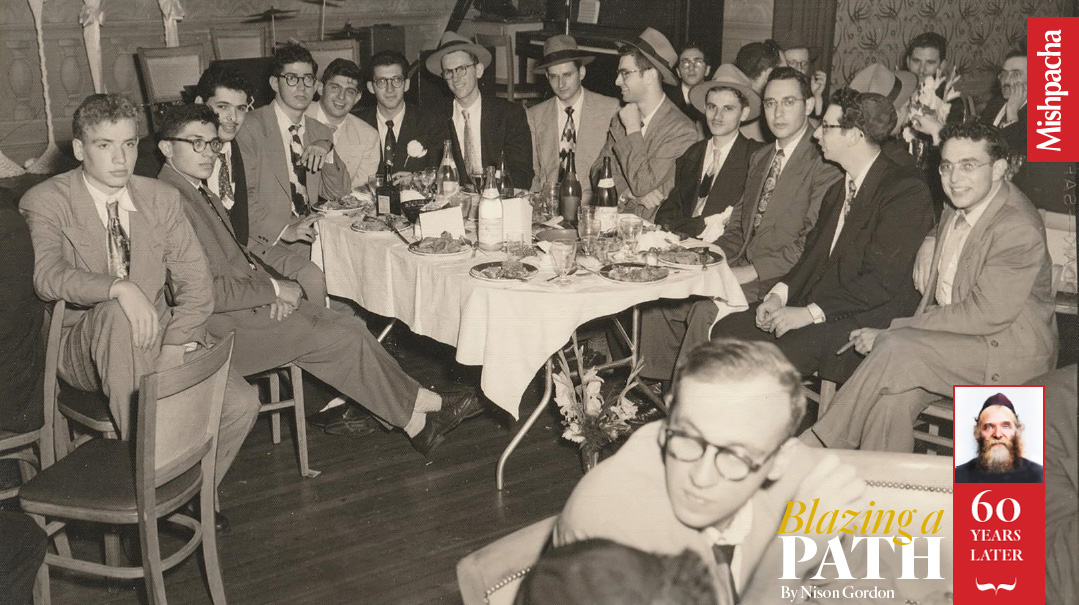
On his visit to Lakewood, Reb Nison Gordon observed an entirely new dynamic. The talmidim would bring the model to many other locations. 1) Rav Pinchas Gruman 2) Rav Velvel Pearl 3) Rav Shmuel Kamenetsky 4) Rav Yitzchok Feigelstock 5) Rav Shneur Kotler
The talmidim who learn in Lakewood are all graduates of mesivta high schools in New York and other cities. The official yeshivah schedule is 12 hours, from nine in the morning to nine at night. But the beis medrash does not grow quiet until very late at night. The sea of Torah they traverse is so enticing that the more a person learns, the stronger his thirst grows, and it is so vast that the farther he swims, the more distant the opposite shore appears.
The world marvels at the Kletzker Rosh Yeshivah for his brilliance in Torah, for his role in safeguarding its boundaries, for his indefatigable askanus on matters relating to the klal, both here in America and in the Holy Land.
What strikes people as most wondrous, I think, is that here in America, he managed to mold the same type of ben Torah produced by the Litvishe yeshivos in which he himself was raised.
In a land where one starts worrying about their child’s career as early as kindergarten registration, it is a great marvel to watch a man gather together in a small town nearly 200 bochurim and yungeleit who have only one goal — to learn Torah!
Beth Medrash Govoha has grown so much that the building on Forest Avenue and 6th Street has become too small, and there is simply no room in the beis medrash, not to mention dormitory space, for all those who wish to learn there.
The beautiful new building on Private Way in Lakewood is another proof of the Kletzker Rosh Yeshivah’s boundless persistence for his mission. The building — its exterior is already complete — stands at the edge of the town and looks out at the open fields of New Jersey to the expansive horizon, waiting for its turn to be embraced by Torah.
While standing on a mound of sand outside the new building, I realize that there is enough space here to build a full town, with single-family homes for the families of the kollel yungeleit. And those yungeleit are a story in their own right.
A Hebrew teacher who works for two hours a day in a Talmud Torah in Long Island comes home each week with a bigger paycheck than the meager sum distributed to these kollel yungeleit. And they have large families, kein yirbu. So how do they manage to cover their expenses?
First, it is indeed very, very tight, and they live very frugally. There are also some couples whose parents help out a bit. Most of the young wives work as teachers and help cover expenses.
Of course, in America the fact that women are going out to work is not newsworthy. But it is certainly newsworthy when they do so because of an old-fashioned, ancient practice — to make it possible for their husbands to sit and learn Torah and to gain a share in their learning and their Olam Haba.
This fiery and fervent love for Torah is what the Kletzker Rosh Yeshivah kindled in the hearts of American-born children.
He has had the capacity to kindle such a fire because he himself is a piece of Torah fire. A Yid who, after all the wanderings and travails that he endured, bursts aflame with the aish dos of Torah whenever his conversation touches on the future of Torah.
Like sparks that jump from glowing coals in a burning furnace, the words fly out of his mouth when he speaks about Torah.
“Klal Yisrael must have Torah… history can be made by others, perhaps. But the continued existence of Klal Yisrael depends only on Torah.”
And if you muster up the courage to mention that there is a view that Torah learning should be combined with other knowledge, you will surely come to regret those words that likely enraged the Rosh Yeshivah.
“A doctor doesn’t have to be an engineer, he just has to be a good doctor,” he will retort. “A lamdan doesn’t have to be a doctor, he has to be only a gezunter lamdan…. And a gezunter lamdan can only become one by sitting and learning day and night.”
According to his view, the goal of Lakewood is two-pronged: First, a deepening of Torah in America; shaping bnei Torah who will be, as he puts it, “gezunte lomdim.” And second, harbatzas haTorah; these yungeleit should later go on to found yeshivos and become roshei yeshivah.
The Rosh Yeshivah of Kletzk-Lakewood proudly lists names of cities — Philadelphia, Boston, St. Louis, Vineland — where his erstwhile talmidim have established mesivtos that place great emphasis on Torah learning.
A talmid of Lakewood does not look at rabbanus as a mission to further Yiddishkeit in America. A rav encounters so many difficulties that can all too likely temper his fervor, and he faces challenges that require compromising his values.
So what will be with rabbanus? Others will take the positions of rabbanim. “It’s takeh a sad situation…. But lomdus, pure lomdus comes first before anything else.”
After 18 years of deepening and strengthening Torah in America, the Rosh Yeshivah of Lakewood is preparing for even greater challenges. When the interior of the new building is complete, a large shipment of new benches will arrive. They will be placed inside the beis medrash, so even more talmidim will be able to learn in Lakewood and become gezunter lomdim.
(Originally featured in Torchbearer, Rav Aharon Kotler Tribute, Issue 941)
Oops! We could not locate your form.

